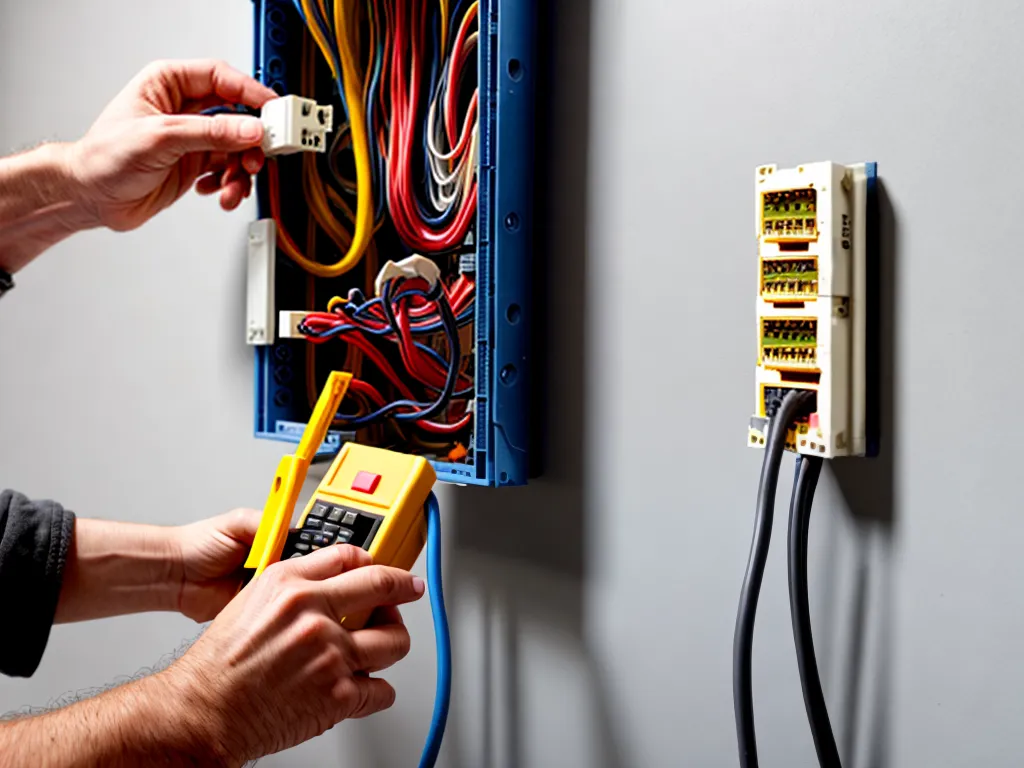
Installing electrical wiring in your home can be a daunting task, but it's crucial that it's done properly and safely. Electrocution is a real risk when working with electrical systems, but with careful planning and adherence to electrical codes, you can avoid hazards and end up with a safe, functional system. In this comprehensive guide, I'll walk you through the entire process from start to finish, with tips to keep you shock-free.
Understanding Electrical Codes
The first step is getting familiar with the local electrical code requirements. These legally-mandated codes specify things like:
- Wire gauges
- Number of circuits and outlets
- GFCI and AFCI protection
- Box fill calculations
- Minimum working clearances
Codes vary by location, so be sure to check with your local permitting office. Getting a permit and having inspections done ensures your work meets all requirements. I always boldly recommend adhering to codes, even for DIY projects. It keeps you safe and avoids problems when selling the home.
Choosing the Right Materials
Once you understand the relevant codes, make a list of all the materials you'll need. This includes:
- Romex cable - Use the gauge specified by code for each circuit
- Boxes - Choose the correct size and type for each location
- Conduit - Select rigid or flexible conduit where required
- GFCIs - Install on all circuits near water sources
- Breakers - Choose breakers that match your panel and wire size
- Devices and covers - Pick standard or decorator style outlets, switches, and cover plates
Shop at electrical supply stores to get pro-grade gear. Avoid flimsy or suspect products that could fail. Spending a bit more upfront avoids hazards down the line.
Safety First
Now let's talk about working safely. Follow these rules whenever dealing with electrical systems:
- De-energize circuits at the breaker before working on them
- Double check wires are truly dead using a non-contact voltage tester
- Never work on live circuits (I'll underline that for emphasis)
- Keep one hand in your pocket while handling wires
- Use insulated tools and wear rubber soled shoes
- Place blankets or mats on the floor in case you drop tools
- Remove jewelry and wear non-conductive gloves
- Never rush or take shortcuts - slow and steady!
Also, keep a fully stocked first aid kit nearby just in case. Safety has to be your top priority.
Running Cables and Conduit
With your materials prepped and safety gear on, it's time to start running cables throughout the house. Here's the step-by-step process:
1. Plan Your Circuits
- Determine where all outlets, switches, and fixtures will be located
- Group devices into separate circuits based on voltage and load
- Draw up circuit diagrams indicating the path of each cable run
Proper planning prevents poor performance!
2. Mount the Boxes
- Mark the exact spot for each box along your planned cable runs
- Choose appropriate box type and size for each location
- Mount boxes securely using proper fasteners for the surface
- Leave boxes accessible but out of the way for future work
3. Run the Cables
- Cut cables to the appropriate length for each run using wire strippers
- Use staples to secure cables every 4-6 feet as permitted by code
- Make sure to leave extra cable at boxes for slack and connections
- Use conduit where required by code or for mechanical protection
Take care not to kink or damage cable insulation while pulling.
4. Connect the Wires
- Strip cable ends using proper stripper gauges for the wire size
- Make tight connections by twisting strands together neatly
- Secure wires to boxes and devices using cable clamps
- Maintain color coding conventions (hot, neutral, ground)
5. Close It Up
- Tuck wires neatly into boxes, leaving 6-8 inches of slack
- Attach covers and devices to boxes using proper mounting screws
- Label all circuits clearly indicating the breaker number
- Seal boxes and conduit openings to contain fire and drafts
Following these steps properly results in a safe, code-compliant wiring job. Take it slow and double check your work as you go.
Testing and Powering Up
With the physical wiring complete, it's time to test and energize the system. Here's how to do it safely:
- Go circuit by circuit and use a multimeter to test for continuity
- Fix any issues before moving on - never power on an incomplete circuit
- Turn the main breaker on and verify power at the panel using a voltage tester
- Carefully switch on each circuit at its breaker and test outlets for power
- Check operation of all lights, switches and devices on each circuit
- Consult an electrician immediately if there are any problems
Finally, schedule an inspection to obtain a permit andCertificate of Occupancy before using the system. Celebrate your new lighting and outlets - you did it right!
In Closing
If you take the proper precautions, educate yourself on codes, and work carefully, installing your own electrical wiring is a very rewarding DIY project. Adhering to the guidelines above will help keep you safe from unexpected shocks throughout the process. So turn off that breaker, grab your tools, and start wiring with confidence!